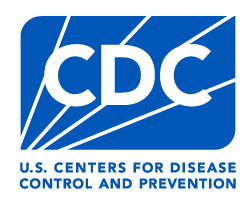0920-1154-24ES Antimicrobial Resistance Communications and Media Suppor
[OS] CDC/ATSDR Formative Research and Tool Development
Attachment 3_CDC DHQP_Cdiff_IDI Guide_HCPs_3.18.24_Final
In-Depth Interviews with Healthcare Professionals about C. Diff Materials
OMB: 0920-1154

 WS-CDC
ARX – DHQP C.
diff
Interview Guide
WS-CDC
ARX – DHQP C.
diff
Interview Guide
Form Approved
OMB Control No.: 0920-1154
Expiration date: 03/31/2026
Antimicrobial Resistance Communications and Media Support Services
Division of Healthcare Quality Promotion (DHQP)
Discussion Guide for C. diff Materials Testing Interviews
March 18, 2024 Final
Introduction; approx. 5 minutes
Welcome! Thank you for speaking with me today. My name is ___________. I’m an independent researcher with KRC Research.
The sole funder of today’s discussion is the Centers for Disease Control and Prevention—CDC. Our conversation today will focus on a health topic.
I’m a professional researcher, not a CDC employee or a subject matter expert on health topics. My role is to learn from you during our conversation over the next 60 minutes.
There are no wrong answers here. I am simply interested in your honest opinions and experiences. However, if you feel uncomfortable answering a particular question, you do not have to.
Because privacy is important, I’m going to share our Privacy Policy.
I will protect your privacy for today’s discussion, and nothing you say will be reported in association with your name. We will use first names only during the conversation. You may choose to use a nickname or any other name you prefer.
Your participation is voluntary—you do not have to answer anything you are uncomfortable with.
I am audio- and video recording for transcribing of our discussion. Because I am having several discussions like this one, it is important for me to have an accurate record of today’s conversation.
Let’s start with introductions. Can you share…
The name you’d like to use for today’s conversation
Where you’re based
Your role or title
What type of practice setting you work in
C. diff Knowledge; approx. 5 minutes
Today we will be talking about Clostridioides [klos–TRID–e–OY-dees dif–uh–SEEL] difficile, also called C. diff. C. diff was formerly known as Clostridium difficile.
Are you familiar with C. diff?
IF AT ALL FAMILIAR: Have you had experience with C. diff? If so, what happened?
IF AT ALL FAMILIAR: What do you know about C. diff, or what have you heard, if anything? 1
IF ANY KNOWLEDGE: Do you know how C. diff infection happens? What can you share?
IF ANY KNOWLEDGE: Do you know of any risk factors for C. diff infection? Which ones? LISTEN FOR ANTIBIOTIC USE
Can you think of any actions an individual in your role could take to combat the spread of C. diff? LISTEN FOR APPROPRIATE ANTIBIOTIC PRESCRIBING, PROBE TO UNDERSTAND IF TIME ALLOWS
What actions could be taken at an institutional level?
C. diff and Antibiotics; approx. 5 minutes
Now I’d like to discuss C. diff and antibiotics.
IF NOT ALREADY MENTIONED Have you heard about the influence antibiotics can have on the incidence of C. diff? What do you know about that?
There are probably many factors you are thinking about when prescribing antibiotics. That said…
What factors are you weighing when prescribing antibiotics?
Do you ever think about C. diff risk when prescribing antibiotics? IF YES How often?
What prompts you to think about C. diff?
What questions do you have, or what would you like to know, about…
The influence of antibiotics on C. diff?
C. diff generally?
Patient Conversations; approx. 9 minutes
Now I’d like to focus on conversations with patients [IF HOSP. OR ED: and/or their caregivers] specifically.
How often does C. diff come up in conversations with patients [IF HOSP. OR ED: and/or their caregivers]?
When has it come up?
What have you talked about when C. diff comes up?
When you’re counseling a patient [IF HOSP. OR ED: and/or their caregivers] about an antibiotic you’re prescribing, is C. diff ever something you talk about? How often?
IF YES: What do you say about C. diff in those discussions?
IF YES: What counsel do you provide?
When you’re prescribing antibiotics, have you ever talked to patients [IF HOSP. OR ED: and/or their caregivers] about…
Being aware of C. diff symptoms?
Knowing when and how to report C. diff symptoms?
What’s challenging about having productive conversations about antibiotics and C. diff risks?
What’s challenging for you? (Limited time, explaining the relationship, explaining when and how to report, limited resources to share, etc.)
What’s challenging for patients? (Low knowledge or confusion, low perceived seriousness, etc.)
What other questions do patients [IF HOSP. OR ED: and/or their caregivers] have about C. diff?
Ultimately, what would need to happen for you to have more regular discussions about C. diff risk [IF HOSP. OR ED: or their caregivers] when prescribing antibiotics?
What resources would you need, or what would need to be different?
Information about C. diff; approx. 5 minutes
Where have you received information about C. diff in the past? What sources?
PROBE: journals, emails, EMR, medical associations, health authority websites, colleagues, CME activities, conferences and webinars, your own practice’s communications, etc.
Where would you turn for information if you wanted it?
What information, data, resources, or tools might help you feel more confident in understanding C. diff risks and providing counsel to patients [IF HOSP. OR ED: and/or their caregivers]?
Do you have any C. diff resources or information that are useful for sharing directly with patients [IF HOSP. OR ED: and/or their caregivers]? If so, what?
What else would be useful to share? (Information, data, resources, tools)
What format works best for patient information? (In-office handouts, digital fact sheets sent through patient portals, web links, etc.)
C. diff Materials Testing; approx. 28 minutes
In our remaining time, we’ll review three C. diff fact sheets from CDC. I’ll share them one at a time and we’ll talk about each. These are drafts, and your input will help to improve them.
FOR EACH FACT SHEET, LISTEN TO ALL FEEDBACK, AND PROBE ON INFORMATION IF CONVERSATION TURNS TO LOOK AND FEEL. RANDOMIZE ORDER OF MATERIALS, BUT KEEP “C. DIFF PATIENT RISK CHECK LIST” and “C. DIFF: IS YOUR PATIENT AT RISK?” TOGETHER, AS BOTH ARE MEANT FOR HCPS.
Qs MARKED [HCP] TO BE ASKED ABOUT THE TWO HCP-FOCUSED MATERIALS; Qs MARKED [PAT] TO BE ASKED ABOUT THE PATIENT-FOCUSED FACT SHEET; ALL OTHER Qs CAN BE ASKED IN ALL CASES.
The first fact sheet is meant for healthcare professionals like you. SHARE #1: “C. DIFF PATIENT RISK CHECK LIST” AND ALLOW TIME TO REVIEW.
What’s your initial reaction?
PROBE: What stands out? Can you point to anything specific? (Look and feel, information, etc.)
[PAT] Is this likely to be interesting to your patients? Why? (Look and feel, information, etc.)
[HCP] Would you use this? How so? (Refer to it once or regularly, post it in clinic or office, discuss with patient, distribute to others, etc.)
[HCP] How easy or hard would it be to act upon this? What challenges do you foresee?
[PAT] Would you share this with your patients?
[PAT] How would you share it? (Hand out, link in patient portal, reference for discussion, etc.)
[PAT] How easy or hard would it be for patients to act upon this?
What do you like about this? PROBE ON SPECIFICS
Does this help answer questions you may have had? How so?
[PAT] Does this help answer questions your patients may have? How so?
What don’t you like? PROBE ON SPECIFICS
What new questions do you have about this?
[PAT] What questions would your patients have?
Is anything unclear, ambiguous, or confusing? What?
[PAT] Is anything likely to be unclear, ambiguous, or confusing for your patients? What?
How would you improve this so that it’s most clear and useful? (Change, add, remove, etc.)
What would you prioritize or make more prominent?
Finally, what are the one or two most important pieces of information [HCP: you / PAT: patients] would take away from this?
The next fact sheet is also meant for healthcare professionals like you. SHARE #2: “C. DIFF: IS YOUR PATIENT AT RISK?” HCP FACT SHEET AND ALLOW TIME TO REVIEW. REPEAT ABOVE QUESTIONS.
The final fact sheet is meant for patients. SHARE #3: “C. DIFF: AM I AT RISK?” PATIENT FACT SHEET AND ALLOW TIME TO REVIEW. REPEAT ABOVE QUESTIONS.
Thank you for your insights. We’ll wrap up with a final question.
What other feedback do you have for CDC as it develops materials to help healthcare professionals and patients understand and take action to prevent C. diff infections?
Finally, I’ve used the term “healthcare professionals” today to describe you and your role. Is this a term that feels right to you, or is there a different term you’d prefer or that you use more often? IF NEEDED: What about for doctors, physician associates or assistants, and nurses as a collective?
INTERVIEWER THANK THE INTERVIEWEE AND DISMISS
1 If a definition is needed at any point: “C. diff is a germ (bacterium) that causes diarrhea and colitis (an inflammation of the colon). Most cases of C. diff infection occur while you’re taking antibiotics or not long after you’ve finished taking antibiotics. C. diff can be life-threatening.” https://www.cdc.gov/cdiff/what-is.html.
Public reporting burden of this collection of information is estimated to average 60 minutes per response, including the time for reviewing instructions, searching existing data sources, gathering and maintaining the data needed, and completing and reviewing the collection of information. An agency may not conduct or sponsor, and a person is not required to respond to a collection of information unless it displays a currently valid OMB Control Number. Send comments regarding this burden estimate or any other aspect of this collection of information, including suggestions for reducing this burden to CDC/ATSDR Reports Clearance Officer, 1600 Clifton Road NE, MS H21-8, Atlanta, Georgia 30333; ATTN: PRA 0920-1154
| File Type | application/vnd.openxmlformats-officedocument.wordprocessingml.document |
| Author | Ruddell, Mike (WAS-KRC) |
| File Modified | 0000-00-00 |
| File Created | 2025-05-19 |
© 2025 OMB.report | Privacy Policy